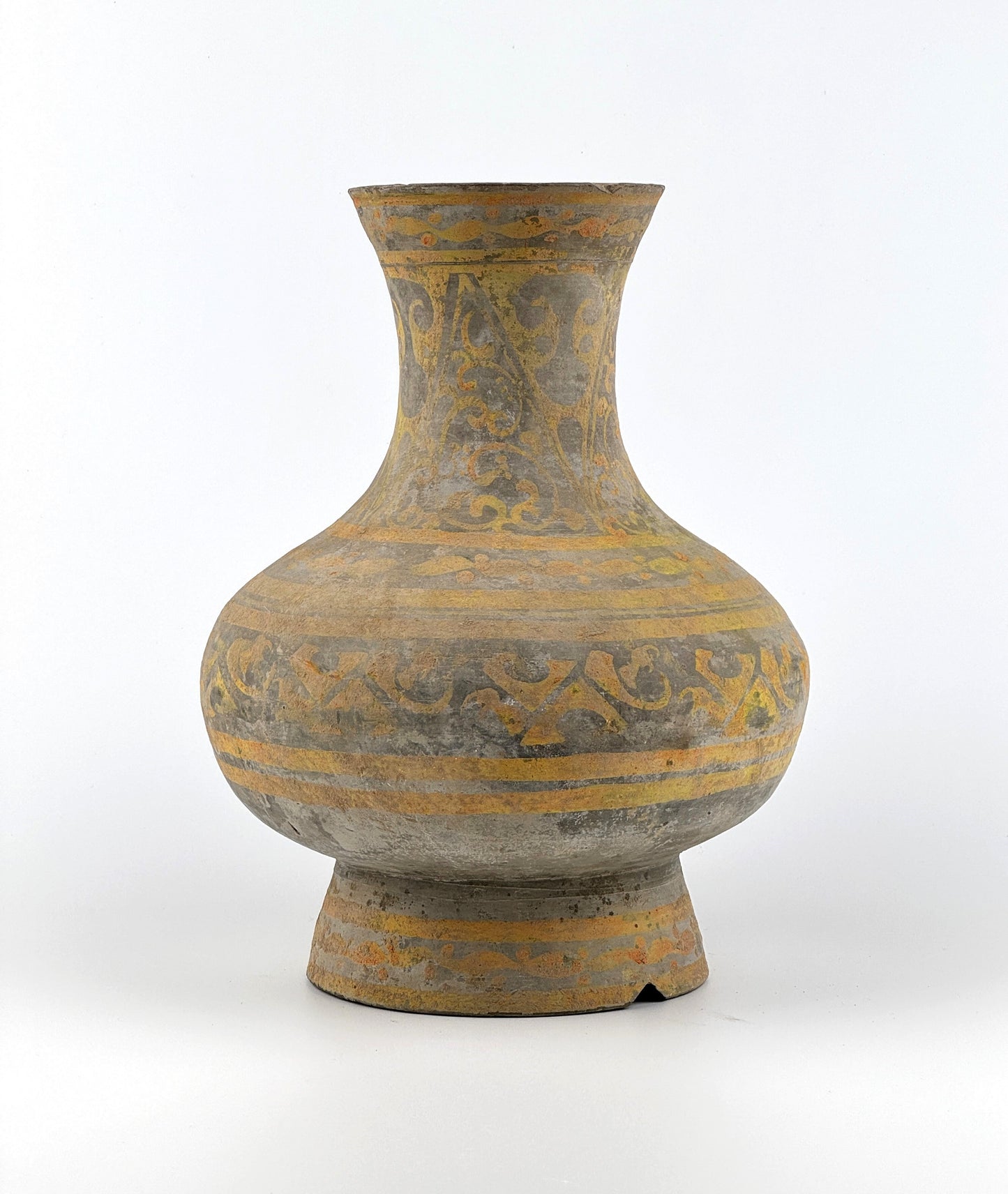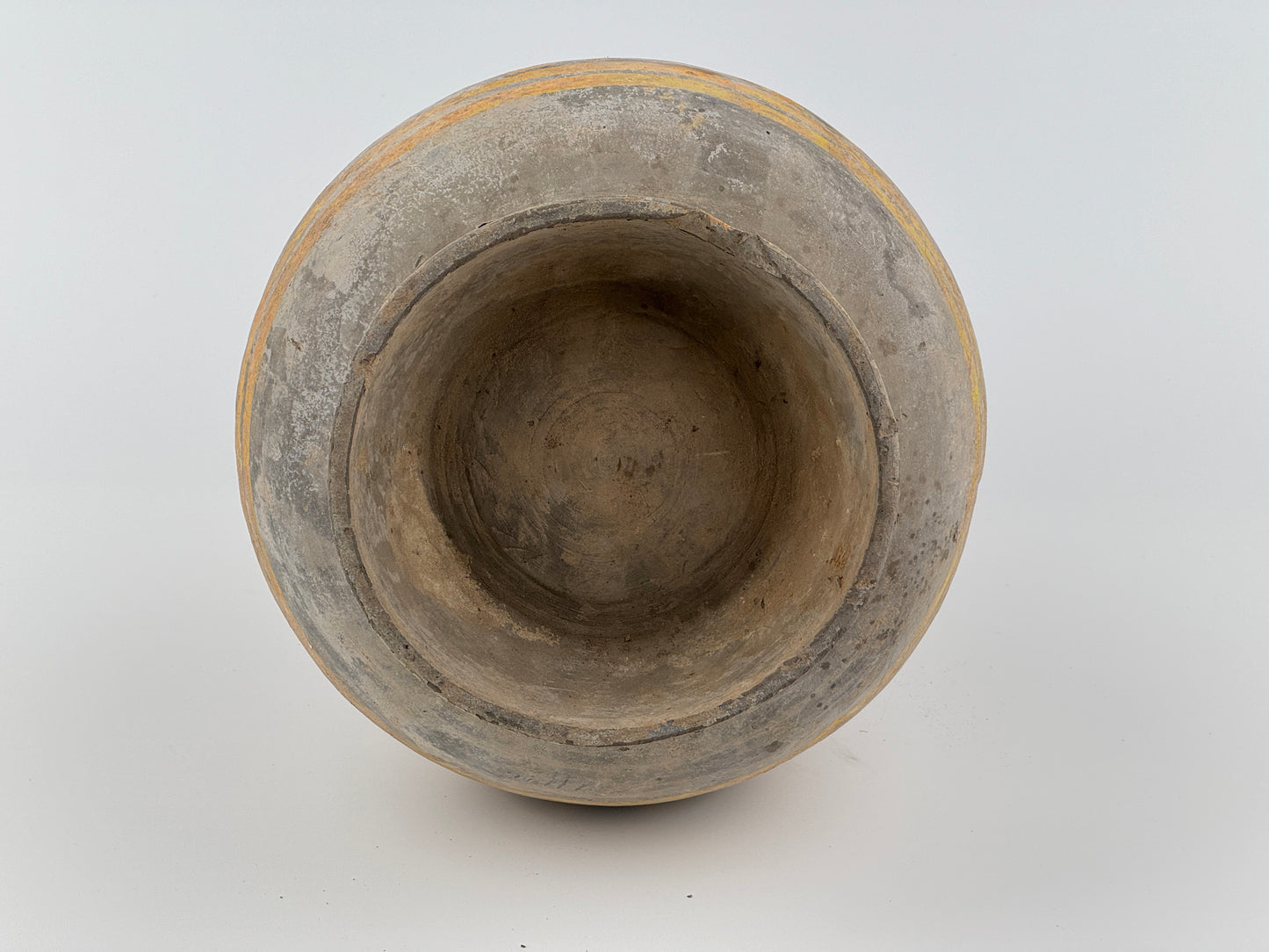Earthenware Pottery Jar, Han Dynasty(206 BC-220 AD)
Earthenware Pottery Jar, Han Dynasty(206 BC-220 AD)
Couldn't load pickup availability
This jar would have served as a mortuary object (mingqi), placed in a tomb as a substitute for the more valuable bronze and lacquer vessels. Along with a variety of other funerary earthenware objects, attendant figures, and animals, richly decorated vessels of this kind were intended to serve the spirit of the deceased in the afterlife.
Period : Han dynasty
Type : Jar
Medium : Earthenware
Dimension : 28.5 cm(Height) x 11cm(Mouth Diameter)
Condition : Good(Overall in well-preserved ancient burial condition with some soil still adhering (showing minor abrasions and wear due to prolonged burial underground)
Provenance : Acquired in late 1990s from Hongkong
* Han Dynasty Earthenware
Han Dynasty earthenware, primarily created as funerary objects, consists of low-fired clay pottery produced at temperatures around 800–1000°C. These pieces typically exhibit colors such as grayish-white, yellowish-brown, or reddish-brown, reflecting the natural properties of the clay and the firing conditions. High-quality examples are often coated with a thin layer of black slip or light green lead glaze, adding luster and providing protection. The forms are simple and functional, with rounded bodies and narrow necks being common, such as jars and cinerary urns. These pieces were designed more for ceremonial or burial purposes than for practical use. The decoration on Han Dynasty pottery often features incised or relief patterns, including motifs like clouds, waves, or geometric designs. Some pieces also incorporate sculptural elements depicting animals or mythical creatures, symbolizing religious beliefs or notions of the afterlife. Combining simplicity with symbolic richness, Han Dynasty earthenware provides a unique insight into the cultural and religious values of the period.














